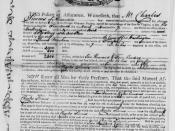Definition of Proximate Cause:
A proximate cause is the first event in a chain of events that gives rise to a claim. There are two elements required to determine proximate cause:
1) the activity must produce a foreseeable risk
2) the injury must be caused directly by the defendant's negligence
Example:
If a car is driving along and swerves to prevent itself hitting a dog and that then causes damage to a lamp post and five other cars, then the car that swerved is the proximate cause.
In this example, the foreseeable risk is the dog which led to the accident that was directly caused by the driver whose intention was to prevent hitting the dog.
Importance of Cause of Loss.
In order for the insurance to make a claim, the cause of loss must be reasonably established, otherwise the insurer will not have a basis on which to pay the claim.
In practice, making a claim is not such a straightforward task since there are the following different types of perils:
1) Insured Perils - risks specifically covered by the policy, such as damages to the car under motor insurance
2) Excepted Perils - risks specified under a policy that are not insured, such as motor insurance policy which excludes any liability for drink driving
3) Uninsured Perils - risks which are outside the scope of cover, such as death of a human being in a traffic accident under motor insurance policy
Legal Considerations.
It is legally required that there is a sufficiently close relation between the covered cause and the covered consequence. This relation is referred to as the doctrine of proximate cause. This doctrine is universally applied in liability insurance as well as in property insurance. A defendant (the person causing the loss or damage)...


